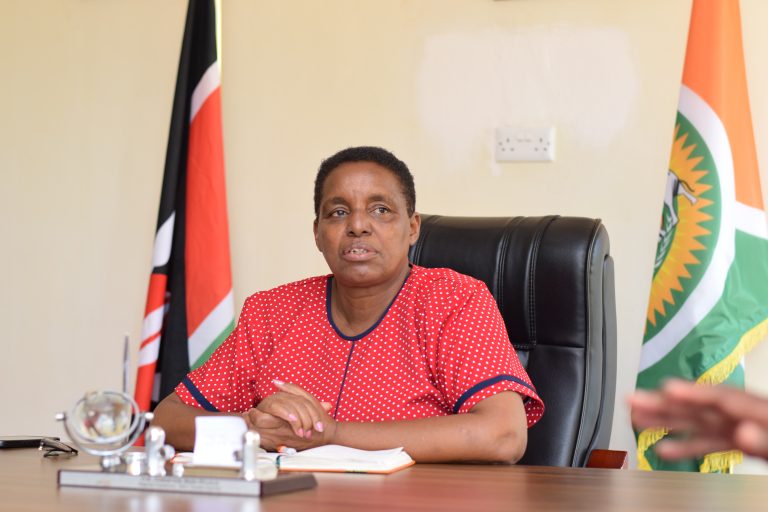Contributors:
- Dr. Emma Kabeu, USAID HERO Regional Coordinator, Coast (Taita Taveta, Kilifi and Kwale)
- John Karisa, USAID HERO Health Financing Officer, Coast (Taita Taveta, Kilifi and Kwale)
- Eric Ongute, USAID HERO Strategic Purchasing Lead
Countries globally are developing strategies to accelerate the attainment of Universal Health Coverage (UHC). The declining global aid for health and the challenging macroeconomic environment are pushing low- and middle-income countries to focus on increasing domestic resources allocated to health and improving the efficiency of applying available limited allocations. Kenya is implementing key UHC reforms aimed at enhancing service coverage and establishing a sustainable, and progressive health financing system. The country has introduced four new UHC reform laws:
- Primary Healthcare Act 2023
- Facility Improvement Financing (FIF) Act 2023
- Social Health Insurance (SHI) Act 2023
- Digital Health Act 2023
USAID Health Equity and Resource Optimization (USAID HERO) project has been collaborating with counties and national stakeholders to support the implementation of these legislations, specifically the FIF Act 2023 and SHI Act. These laws address the long-standing challenge of delayed exchequer releases and insufficient resources at the facility level, which have hindered responsive health service delivery.
The Constitution of Kenya, under Article 207, establishes a County Revenue Fund account, where all county revenues must be deposited, with some exceptions allowed by legislation. However, most counties did not exclude facility-generated resources from this fund, leading to challenges such as delayed budget appropriations and the reallocation of funds generated from health services delivery to non-health priorities.
A few counties that established health funds faced delayed finance disbursements, and the high cost of fund administration further shrinking the pool. Without consistent political support, the counties struggled to maintain the effectiveness of these health funds, leading to inefficiencies in resource allocation and reduced service delivery at the facility level. Taita Taveta County established a Facility Improvement Fund (FIF) under the Taita Taveta Health Services Act of 2021. This allowed Level 4 facilities to retain collections from service delivery. The collecting facilities retain 75% at source, 25% is released to support primary healthcare and 5% is for fund administration.

With the Kenya Kwanza Government’s bottom-up economic agenda (BETA), the Ministry of Health prioritized uniform laws across counties, allowing facilities to retain 100% of their revenues as Appropriations-in-Aid. Implementing the SHI Act 2023 ensures all services at every level are compensated, while the FIF Act 2023 allows dispensaries and health centers to collect, retain, and spend at source. As part of building structures for optimal claims from SHA funds, the Department of Health in Taita Taveta County, USAID HERO and other partners had a two-day FIF performance review for FY 2023/24.
USAID HERO used this forum to lead discussions on facility service preparedness including SHA registration. The review showed that most facilities had met or exceeded their funds collection targets, However, they operate below capacity and the targets were not optimal. This was largely due to the failure to routinely review data with an eye on resource generation and service delivery. This data includes catchment population, workload, and service delivery capacity, the performance of individual departments and specialized clinics, and reimbursement rates. This then informs the development of performance gaps. The teams establish action to support improvement and develop optimal performance targets thus scaling up resource generation and service delivery.
6 key steps for Taita Taveta to optimize FIF:
- Reinvestment of Resources: Facilities must reinvest the resources they generate to enhance service capacity and boost revenue. For example, Moi Teaching and Referral Hospital established a dental unit to compete with private providers, while Mwatate Sub-County Hospital focused on improving internet connectivity for better data capture.
- Health Insurance Uptake: Facilities should ensure all clients are registered under the SHA. In addition, the Department of Health will work with the treasury to secure budgets for indigents, reducing the financial burden of waivers and exceptions. Collaboration with politicians is also important, as they often request waivers for their constituents. Waivers, for instance, accounted for 8% (KES 19,000,000) of the total resources generated by facilities.
- Resource Tracking: Facilities should monitor the resources generated by each department, clinic, and unit, guiding how much is reinvested. For example, the physiotherapy unit at Moi Teaching and Referral Hospital generated significant revenue despite minimal investment, while the more heavily invested eye clinic produced less.
- Documentation: Facilities should streamline patient flows and ensure all service data is accurately captured to prevent revenue loss.
- Target Setting: Departments should set targets based on data reviews and assess progress quarterly. The data shows that facilities can generate more resources and operate independently, though this potential has not yet been fully realized.
- Finance Act Awareness: The Department of Health should distribute the Finance Act to all department heads to ensure awareness of the new charges and compliance.
- SHA Contracting Readiness: The Department of Health must complete the registration of new facilities by 9th September 2024, with all facilities renewing their licenses by the same date. To facilitate renewals, facilities should establish official email addresses using their facility names (e.g.zungulukanidispensary@gmail.com), with credentials shared with SC Team Leads and a directory maintained at the CDH office
